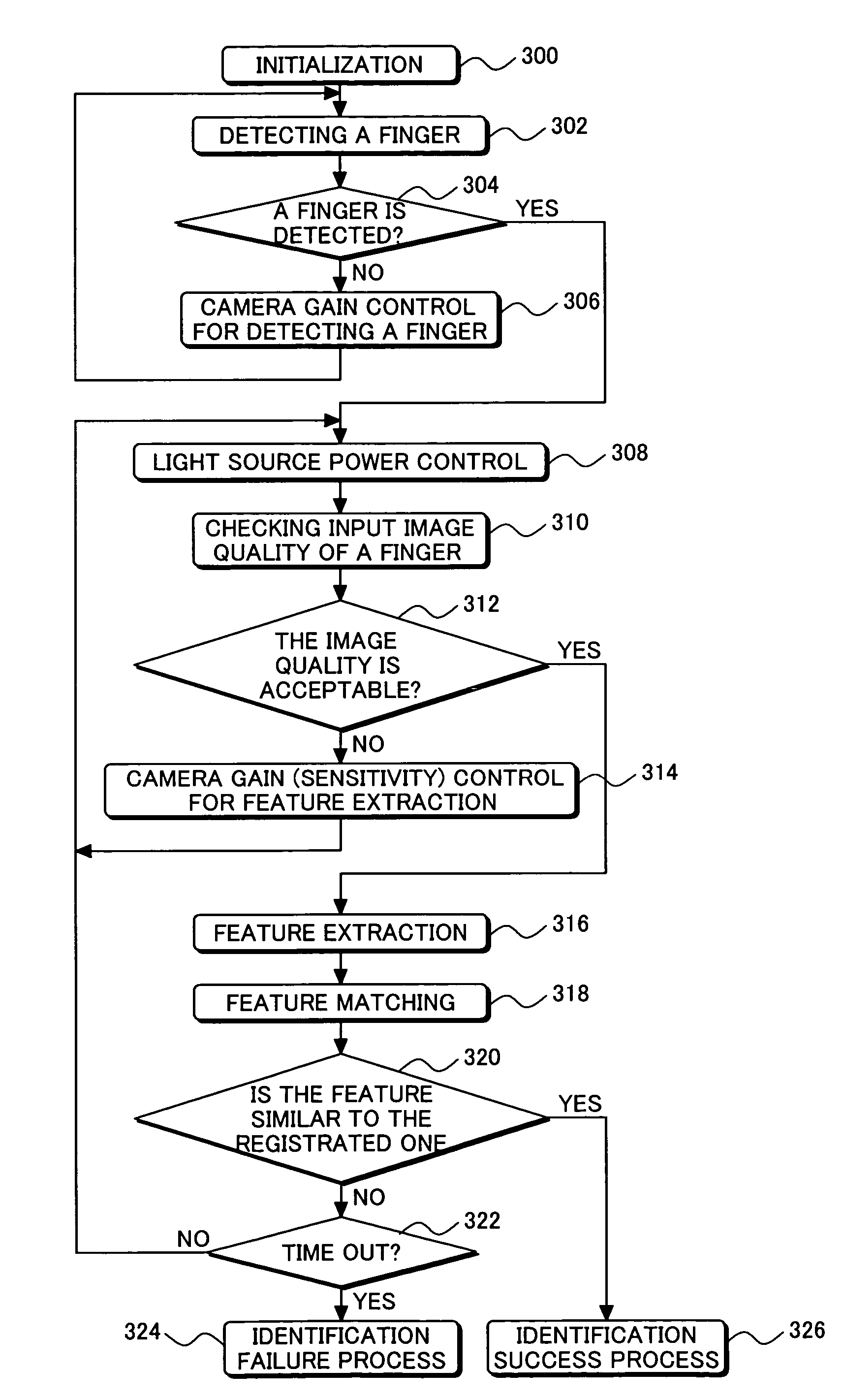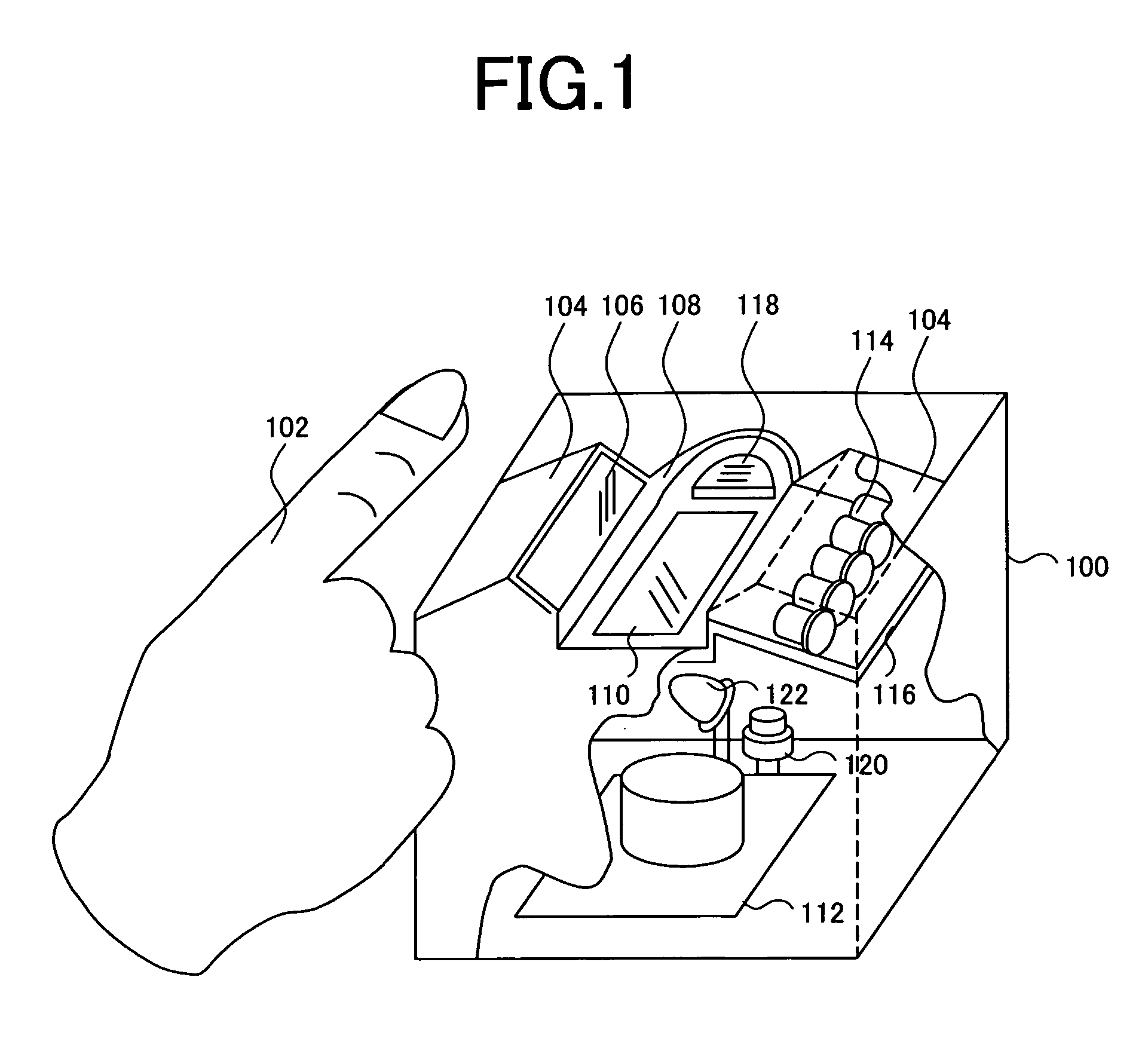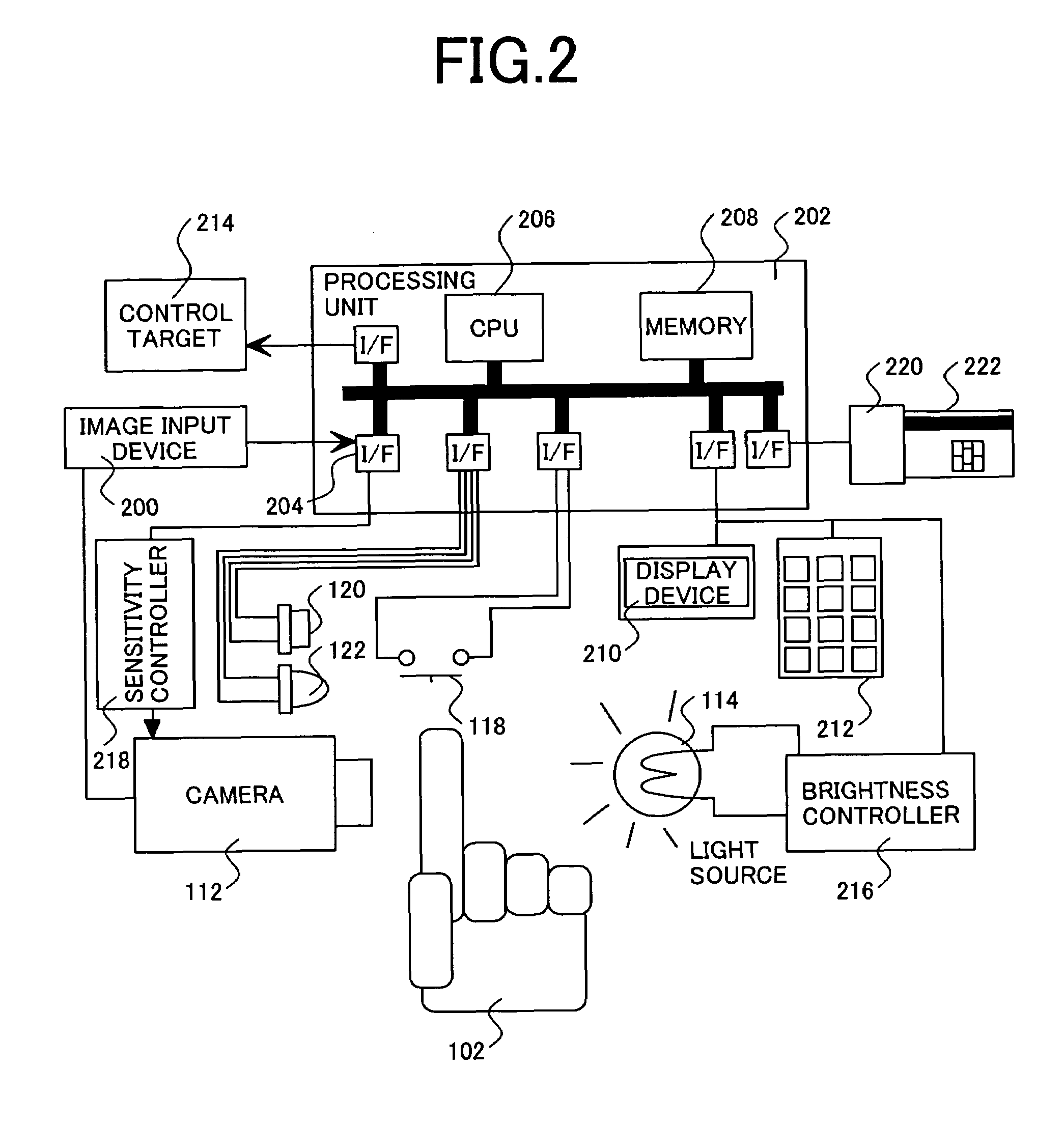Finger identification method and apparatus
a finger and finger technology, applied in the field of biometric personal identification apparatus, can solve the problems of insufficient use of light irradiated to the finger, inability to obtain the correct blood vessel pattern, and limited the supposed range of external light variation, so as to achieve optimum picture quality, reduce energy consumption, and improve identification precision
- Summary
- Abstract
- Description
- Claims
- Application Information
AI Technical Summary
Benefits of technology
Problems solved by technology
Method used
Image
Examples
Embodiment Construction
[0027]Hereafter, an embodiment of the present invention will be described in detail.
[0028]FIG. 1 is a schematic diagram of an identification apparatus 100, which implements the present invention. On a top surface of a main body, there is a guide groove 108, which exhibits a place to place a finger 102 therein in an intuitively understandable form. Light source units 104 are disposed on the left and right sides of the guide groove 108. This guide groove has a function of serving as a low light shielding wall that hides the lower half side of the finger. It is possible to physically shield external light that streams from a low position into the finger. A blood vessel pattern to be picked up as an image is present on the lower half side of the finger. When light irradiated from the left and right light sources is scattered in the finger and output from the lower side of the finger, a pattern based on the contrast between brightness and darkness is formed by a difference in light absor...
PUM
 Login to View More
Login to View More Abstract
Description
Claims
Application Information
 Login to View More
Login to View More - R&D
- Intellectual Property
- Life Sciences
- Materials
- Tech Scout
- Unparalleled Data Quality
- Higher Quality Content
- 60% Fewer Hallucinations
Browse by: Latest US Patents, China's latest patents, Technical Efficacy Thesaurus, Application Domain, Technology Topic, Popular Technical Reports.
© 2025 PatSnap. All rights reserved.Legal|Privacy policy|Modern Slavery Act Transparency Statement|Sitemap|About US| Contact US: help@patsnap.com



